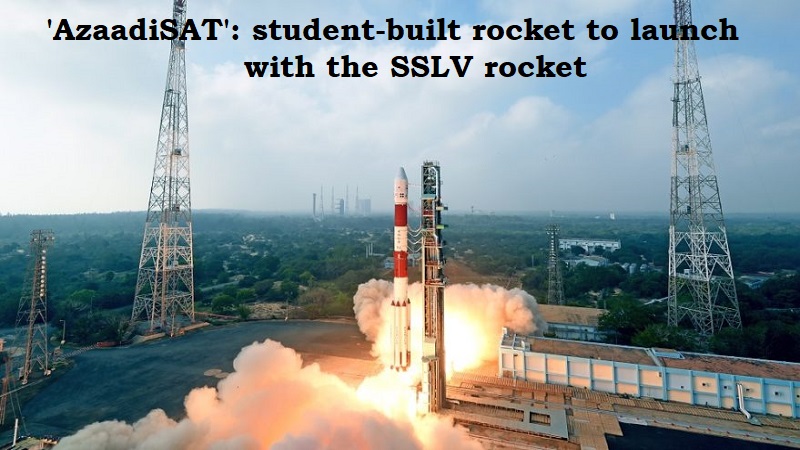
750 students from all over India will watch in excitement as the cutting-edge Small Satellite Launch Vehicle (SSLV) of the Indian Space Research Organization takes off from the spaceport in Sriharikota. The SSLV will also be carrying the ‘AzaadiSAT,’ which is the outcome of the students’ work, on its inaugural flight, which is expected for the first week of August 2022 (possibly on August 2).
This student-built satellite, which weighs 8 kg, carries 75 miniature payloads known as ‘femto experiments’ (created by the students), a selfie camera to examine how solar panels perform in space, as well as LoRa (Long Range Communications) transponder experiments that would provide low bandwidth connectivity to ‘Internet of Things’ devices in remote areas. It is equipped with a store and forward messaging system for amateur radio operators. The satellite also carries sensors to monitor temperature, humidity, pressure sensors, an accelerometer, gyroscope and a magnetometer.
The entire satellite building effort, according to Dr. Srimathy Kesan, CEO of SpaceKidz India, the group that coached the group of girls to build the satellite, was started from scratch. ‘The on-board computer, communication system, power system, and satellite bus (infrastructure and shell) were all conceived from the ground up and carried out domestically. More girls will be inspired to pursue STEM fields or work in the space sector as a result ‘She mentioned in an interview.
Contrary to the majority of student spacecraft that ride on the fourth and final stage of the PSLV rocket, ‘AzaadiSAT’ will be a regular orbiting satellite. So, ‘AzaadiSAT’ is an upgrade over earlier students’ satellites of SpaceKidz India, as the latest one has its own power systems, and batteries, that are expected to make it work in orbit for six months.
She noted that the MoU for the launch aboard the SSLV rocket was signed by their team in the presence of Indian Prime Minister Narendra Modi at the opening of the INSPACe (Indian National Space Promotion and Authorization Center) headquarters in Ahmedabad.
A rocket, SSLV is intended to place satellites that weigh less than 500 kg in Low Earth Orbit. Dr. Somanath had previously informed that SSLV was being envisioned as a rocket that could be completely manufactured by Indian industry and assembled for launch in only one week. To ensure that it is kept straightforward and simple for business to adopt, he stressed that SSLV uses less exotic materials in its manufacturing process.
The 142 kilogramme ‘Miscrosat 2A,’ which is intended to address the rising demand for cadastral mapping (the demarcation of land parcel borders), urban and rural management, coastal land usage, etc., is expected to be the primary payload of the first SSLV rocket. Two payloads, MWIR and LWIR, each with a resolution of six metres, are carried by the satellite.

Post Your Comments